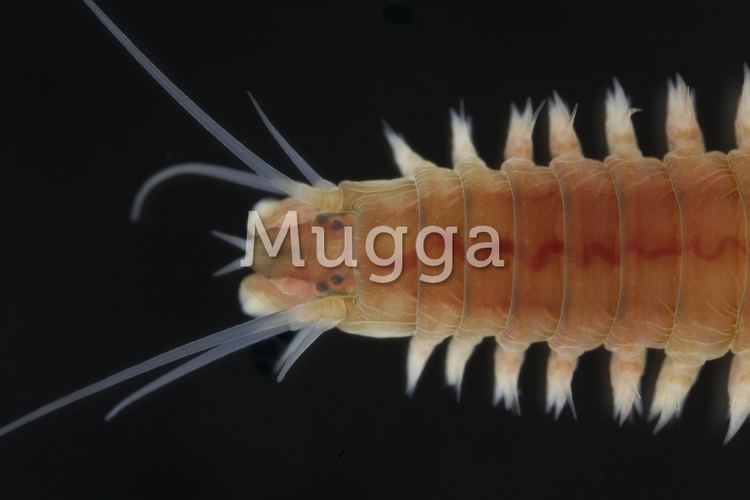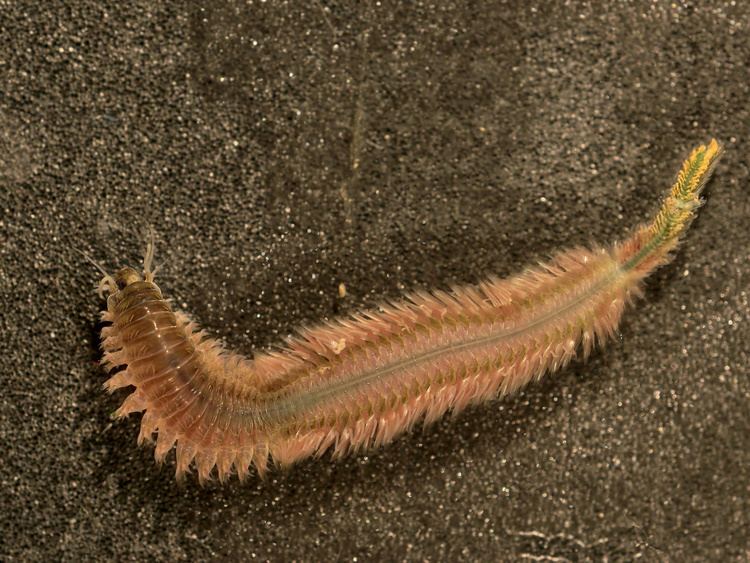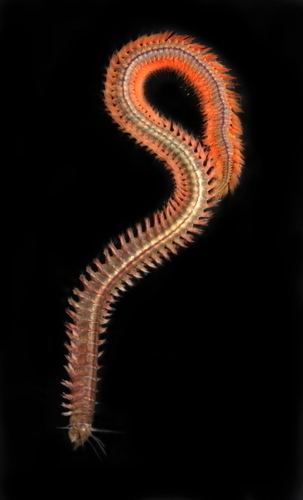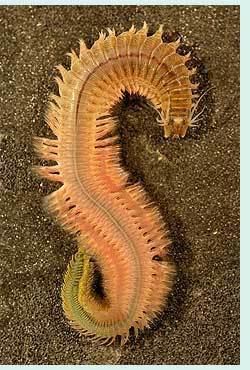Subclass Aciculata Higher classification Alitta | Genus Alitta Rank Species | |
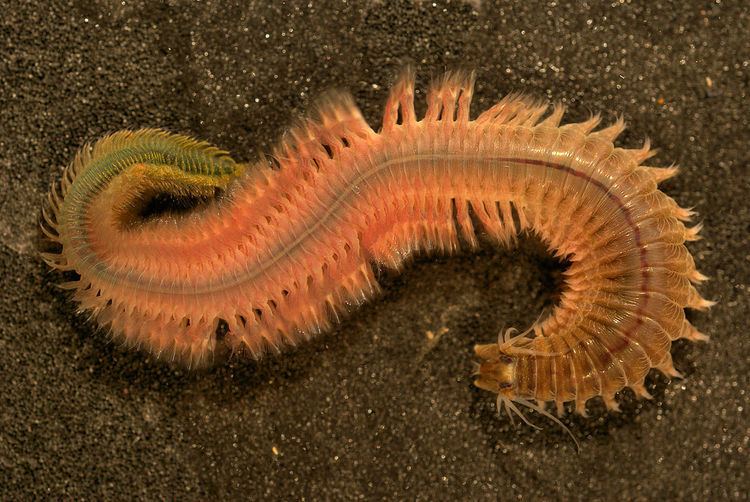 | ||
Similar Polychaete, Annelid, Nereididae, Neanthes, Alitta | ||
Alitta succinea nereis polychaete
Alitta succinea (known as the pile worm or clam worm) is a species of marine annelid in the family Nereididae (commonly known as ragworms or sandworms). It has been recorded throughout the North West Atlantic, as well as in the Gulf of Maine and South Africa.
Contents
- Alitta succinea nereis polychaete
- Alitta succinea nereis polychaete 30s
- Description
- Life cycle
- Synonyms
- References
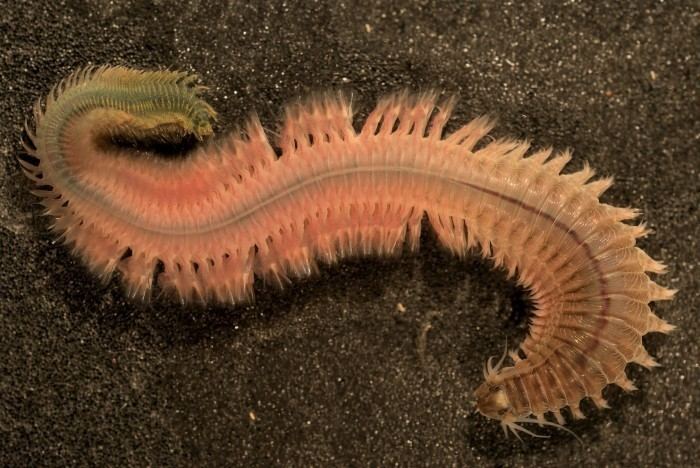
Alitta succinea nereis polychaete 30s
Description
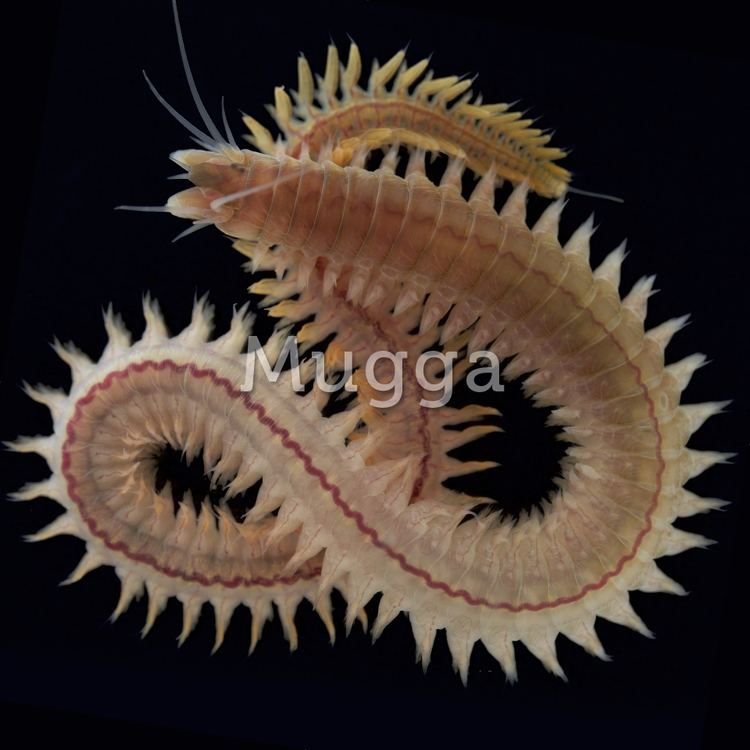
The clam worm can reach up to 15 centimetres (6 in) in length, but most specimens are smaller than this. It is brown coloured at the rear, and reddish-brown on the rest of its body. It has an identifiable head with four eyes, two sensory feelers or palps, and many tentacles. The head consists of two segments: the anterior and posterior prostomium. The last body segment is known as the pygidium.
Life cycle
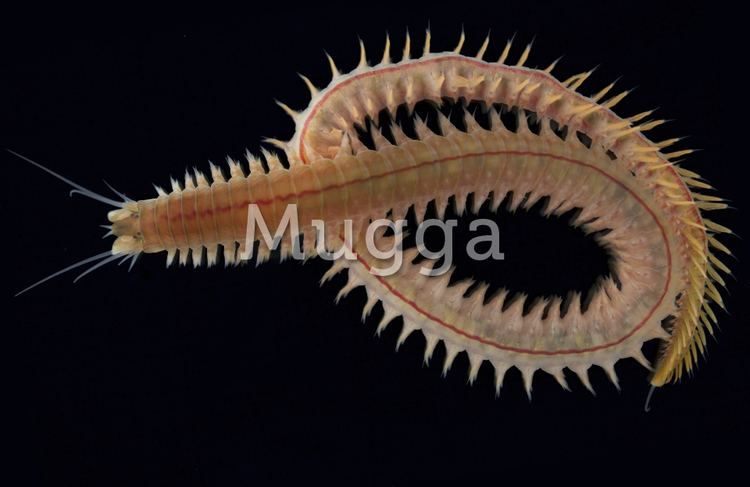
It is a freeswimming polychaete, scavenging on the bottom of shallow marine waters. It feeds on other worms and algae. To feed, it uses a proboscis, which has two hooks at the end, to grasp prey and draw it into its mouth. Clam worms are an important food source for bottom-feeding fish and crustaceans, though they can protect themselves by secreting a mucus substance that hardens to form a sheath around them.
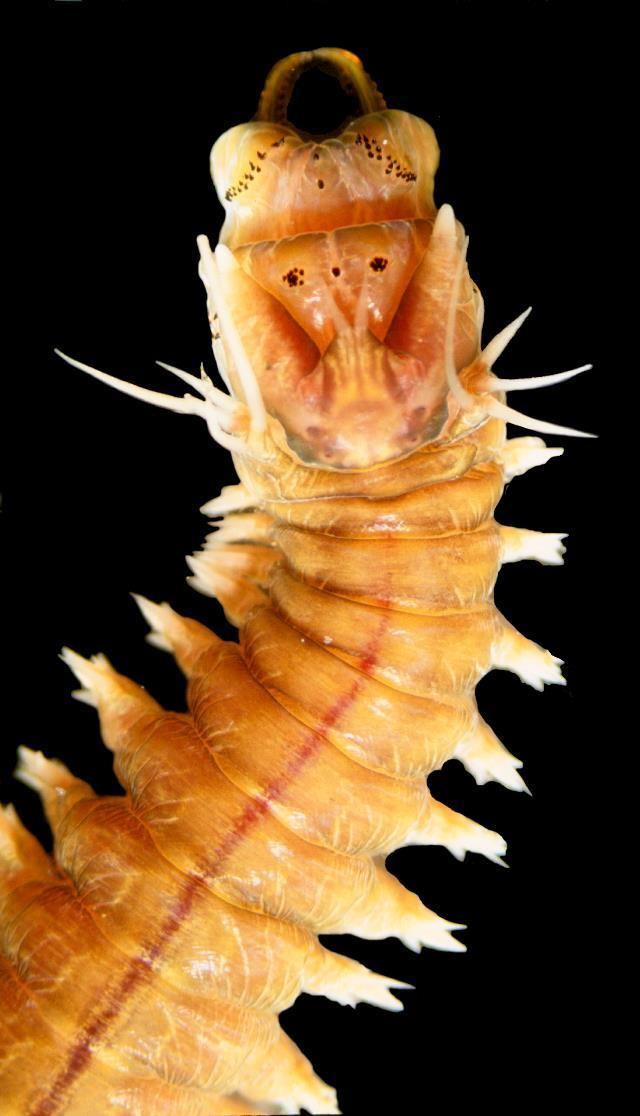
During lunar phases in the spring and early summer, the clam worm undergoes epigamy. Their parapodia enlarge so they can swim. The clam worms are then capable of releasing eggs and sperm. Soon after they have released their eggs or sperm, they die.
Planktonic larvae develop, grow into adults and eventually sink to the bottom of the water.
Synonyms
Synonyms of Alitta succinea include:
